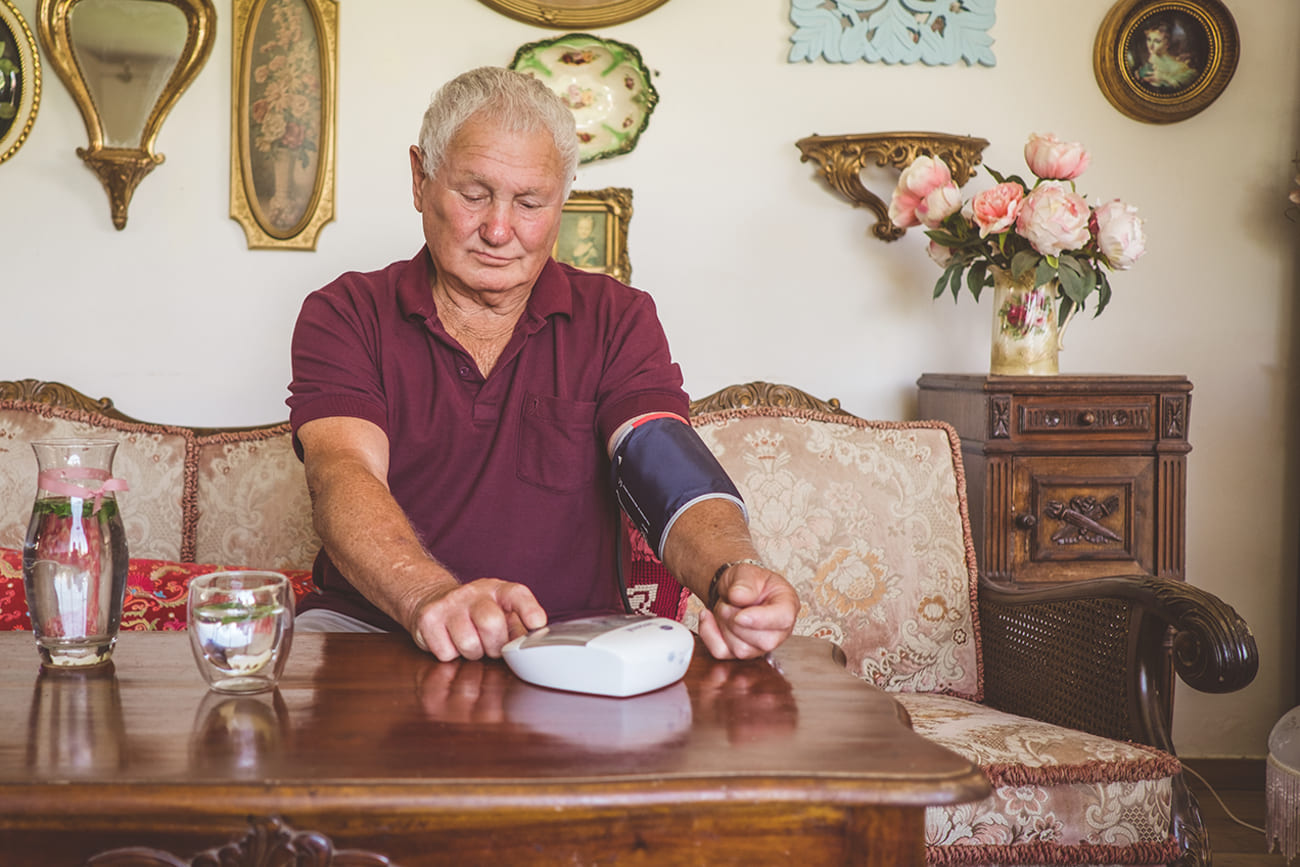High Blood Pressure
High blood pressure (namely, blood pressure higher than 140/90) is one of the key risk factors of cardiovascular diseases, including heart attack and stroke. These diseases are among the leading causes of death in Israel.
According to a survey that has been conducted in Israel between 2007-2010, approx. 20% of the general population reported a high blood pressure diagnosis.
The prevalence of the phenomenon increases with age; from the age of 65 years and over, approx. 60% of women and 50% of men are diagnosed with high blood pressure.
Causes of high blood pressure
High blood pressure can be caused by lifestyle factors or diseases.
Causes related to lifestyle
- A diet rich with salt and saturated fats
- Overweight
- Lack of physical activity
- Stress
- Smoking
Causes related to diseases, medical conditions or the effects of medications
- Hormonal problems
- Kidney dysfunction
- A reaction to an interaction between certain drugs
- Stiffness of blood vessels (a common condition among elderly people)
High blood pressure diagnosis and monitoring
The elevation of blood pressure usually has no signs in the first stages. Therefore, it is essential to undergo a routine blood pressure test in a clinic. If the results are normal over time, you can get tested less frequently.
If you have been diagnosed with hypertension, it is important to maintain a continuous monitoring by a physician.
Measuring blood pressure
Blood pressure can be measured without going to the HMO clinic or with a sphygmomanometer (blood pressure monitor) for home use.
Advantages to measuring blood pressure at home
Convenience: blood pressure can be measured without going to a clinic - a considerable advantage for those who are being monitored.
Stress reduction: measuring blood pressure at home reduces stress created, often, by being in a clinic (white coat syndrome) and may also affect blood pressure.
Valid blood pressure for adults
Over the age of 65 it is recommended to measure blood pressure twice a year.
If you have been diagnosed with hypertension, it is advisable to consult with the family physician about measuring your blood pressure more frequently.
How to measure your blood pressure at home and obtain accurate and reliable results
Before the measurement:
- Sit back and rest for at least five minutes before the measurement
- Empty your bladder
- Do not drink coffee and do not smoke for an hour before the measurement
During the measurement:
- Adjust the sleeve size to the circumference of the arm
- Perform the measurement while sitting down
- Place the arm at heart level
- Do not speak during the measurement
- Since results are often influenced by stress, it is recommended to perform two measurements, one after the other
What is considered normal and high blood pressure?
| Systolic | And/Or | Diastolic | |
| Normal | Less than 120 | And | Less than 80 |
| Marginal | 120 – 129 | And | Less than 80 |
| Mild hypertension | 130 – 139 | Or | 89-80 |
| Moderate hypertension | 140 and above | Or | 90 and above |
| Severe hypertension | Higher than 180 | And/Or | Higher than 120 |
Treating high blood pressure
Treatment of high blood pressure will be adapted by your family physician.
If medication is recommended and you are taking multiple prescriptions, it is important to consult with your family physician or a geriatric doctor to ensure there is no interaction with other routine medicines.
Furthermore, it is important to adopt some lifestyle changes, even if you receive medical treatment for high blood pressure.
If you have been diagnosed with light hypertension, you may be able to avoid medical treatment by adopting some lifestyle changes only.
What can you do to reduce your blood pressure
How to reduce the risk of having high blood pressure
A healthy lifestyle which consists of a well-balanced diet, physical activity and avoiding smoking may reduce the risk of hypertension, and subsequently, of comorbidity and mortality.
It is essential to keep to a healthy weight, maintain a healthy, low-cholesterol diet, reduce processed foods, caffeine, and alcohol intake, and introduce physical activity into the routine according to your capabilities and preferences.
Additionally, routine blood pressure measurement helps with early detection and treatment.

















